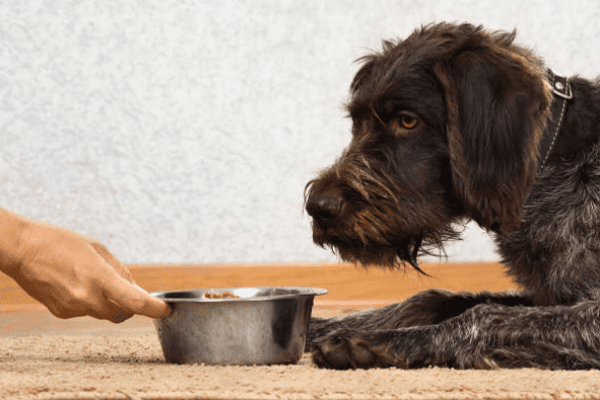Diseases of pets >>>> Does botulism occur in pets?
Does botulism occur in pets?

One of the most dangerous human diseases Botulism can also occur among animals. But if infected people have a small chance of surviving with timely recognition of the symptoms of the disease, then in animals when botulinum toxin enters the body, one hundred percent mortality is observed, since the animal cannot “complain” about the symptoms of malaise.
Botulism is classified as food poisoning, but in fact, the culprit of the disease is an infectious agent - the bacterium Botulinum (Clostridium botulinum).
The bacterium Botulinum, colloquially known as “Sausage bacillus“, produces an unusually strong toxin that attacks nerve endings and causes nerve paralysis in the tongue, throat, and mandible. Violation of innervation in this area deprives a living being of the ability to swallow and inhale air, which, if untimely medical assistance ends fatally.
The bacterium received the name “Sausage bacillus” adequate to infection situations, since among food products it is found precisely in canned meat, smoked meats, canned fish and smoked meats, as well as in canned vegetables and home-made cheeses.
The bacterium lives in the soil. Its natural habitat is an oxygen-free space, but in an oxygen-rich air environment, it is in a dormant state in the form of spores. At the slightest possibility of lack of access to oxygen, the bacterium begins its vegetative cycle, releasing a toxin in the course of its life. When the preservation is opened, the product turns out to be saturated with a toxin or such a critical amount of bacteria that are deadly to the animal or human body.
The bacterium is spread by spores (in the composition of dust, with inaccurate unsanitary storage or food products poorly washed from dirt), and the stability of spores of the bacterium is ensured by the impossibility of their death even after six hours of boiling. Safe preservation of food products can only be ensured by a twenty-minute autoclaving process, where the temperature regime for processing the product significantly exceeds the boiling point of water.
What is the difference between home-prepared fresh meat, fish or vegetable products and home-canned meat, fish or vegetable products in terms of the risk of Botulism infection? Botulism bacterium is anaerobic, that is, it is perfectly preserved in an airless environment (without oxygen). The boiling point of water can kill bacteria when boiled for 30 minutes, but the bacteria's spores are resistant to heat treatment at boiling or steaming levels. It is the spores of the bacteria that remain in an airless space and withstand many hours of boiling, and not the bacterium itself or the remnants of the toxin (botulinum toxin decomposes when boiled). For this reason, open canned food must be thermally treated for half an hour of boiling before eating in order to prevent infection and its death.

Not all animal species are equally susceptible to the bacterium Botulism, as the bacterium has several different types with varying degrees of toxicity. It is the degree of toxicity of the bacteria that determines the possible outcome of infection. Of the carnivorous pets, cats and dogs are less susceptible to botulinum toxin, but domesticated fur animals (for example, mink, skunk, fox, ferret, raccoon, rat) can be in mortal danger from homemade meat food with poor-quality thermally processed products (ham, sausages, canned meat, homemade fish).
In addition to fur animals, the Botulism bacterium is dangerous for domestic or domesticated hedgehogs, domestic ungulates (horses, goats), ornamental pigs and birds of prey (domestic owls, hawks, falcons and other domestic birds that are fed with meat or fish products).
Feeding animals with smoked meats and canned food prepared at home or under technologically unacceptable conditions is prohibited without prior heat treatment. It is not known exactly what type of bacteria can end up in food, and how the animal will cope with toxic food poisoning.
In animals, when infected with the bacterium Botulism, the incubation period may be longer than in humans. This fact is worth remembering in order not to use a pet as an indicator of testing a food product for suitability for eating and for contamination of the product with the bacterium Botulism. That is, when giving a dubious piece of food to your pet, you should not rely on your own safety, waiting for the animal to react to infection. At best, the animal will be immune to the toxin, and at worst, the symptoms will become noticeable much later than the owner of the pet who ate the same food.
How does the disease Botulism develop in an animal, if, nevertheless, the animal's food turned out to be contaminated with the type of Botulism bacteria to which the animal is susceptible?
- Violation of the swallowing function becomes the first sign of the development of the disease, and the animal refuses to drink and eat or spits out food or water.
- Involuntary salivation, which is not typical for this type of animal, may also be a sign of the impossibility of swallowing saliva (swallowing disorder).
- Unlike a person, whose nerves in the pharynx and tongue are paralyzed (speech is disturbed and difficulty in swallowing saliva appears), limbs may fail in an animal, coordination of movements may be impaired, the motor optic nerve is affected (in an animal, when the position of the head changes, the eyes do not turn according to movement).
It is difficult to provide first aid to an animal at home in a situation of development of Botulism, since it will require gastric lavage, an enema and intravenous administration of an anti-botulinum vaccine (as soon as possible!).
The main prevention of infection with the bacterium Botulism of an animal is the legibility in the choice of feed for the animal, in compliance with sanitary standards when feeding the animal (do not allow food to be eaten from the floor or from the ground) and the unacceptability of compiling the animal's diet with the participation of smoked meats and home canned food.

Read

Read



























